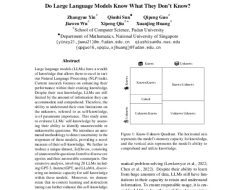Issue Overview
In Python, there’s an ambiguous behavior when dealing with tuples containing a single element. Specifically, assigning a value like python = 1, results in python being treated as a tuple (1,). This behavior can be non-intuitive, especially for beginners, and lacks an explicit error message, potentially leading to unintended bugs.
Proposed Solution
- Introduce a clearer error message or warning when creating single-element tuples.
- Enhance the documentation on this behavior to prevent confusion among new Python users.
Expected Outcome
- Developers will have a clearer understanding of Python’s behavior when creating single-element tuples.
- Reduce the risk of accidental errors among beginners due to this unique syntax.
Additional Information
- This issue is particularly confusing for those new to Python.
- Current Python documentation does not sufficiently explain this behavior.
There are an untold number of programs that rely on this behavior. It certainly cannot become an error, so the only choice would be to make it a warning forever. And I don’t think that’s a good idea: most of the people who see these warnings couldn’t do anything about it.
I think this is best left to linters to warn about.
6 Likes
It’s not ambiguous; it does the same thing in every situation. It’s also by design. It lacks an explicit error message, yes. It lacks any kind of error or warning message, because it is considered correct code. It’s a natural consequence of a) the fact that a comma is needed to indicate a tuple (since letting (x) mean anything different from just x would cause all kinds of other problems) plus b) the convenience of not requiring parentheses for a tuple (which, in turn, is why you can write x, y = y, x without parentheses).
Some may find it not intuitive. But I ask: what else might one expect it to do?
It’s documented all over the place: in the tutorial, in the detailed language reference for expressions (the syntax 1, is an expression_list), again in the full grammar specification in the language reference, in the built-in types section of the library reference, on the wiki, and on Stack Overflow.
It’s also fairly hard to do this by accident. , isn’t a common typo for ;, for example, and “you don’t need semicolons” is one of the big selling points of Python, so beginners coming from other language backgrounds should be trained out of the bad habit as quickly as possible. I suppose that in the specific example of 1,, that could be a typo for 1. – I recommend always typing at least one explicit decimal digit for floating-point values, thus, 1.0. That’s how you write it in a math classroom, anyway.
There is no error, and I do not see any ambiguity in the example. However, in the section where tuples are defined, I think the phrase about one-item tuples, ” The trailing comma is required only to create a single tuple (a.k.a. a singleton)”, would be improved by replacing “single” with “one-item”, as “single tuple” really means “one tuple (of whatever length)”. I also think a minimal example, such as “such as 1,” would help. I would also replace ‘;’ with ‘.’ and make the second phrase a separate sentence. The result would be ” A trailing comma is required only to create a one-item tuple (a.k.a. a singleton), such as 1,. (I believe the .rst markup would need double backticks instead of single backticks for the example.)
EDIT: I will look at the tutorial tomorrow. (Karl’s first post with a link (thanks) was posted while I wrote the original version of this line.)
1 Like
It’s in the links in my post ![]()



